Campus Interview
Ms. Chen Kuan-lin
|
Education
Experiences
|
 |

|
Education
Experiences
|
 |
 I was not a healthy girl. I was in the hospital a lot because I had asthma. My mother wanted me to exercise a bit so that I could get better. Did I want to learn dancing? It was not up to me to decide when I was a kid. There were times I did not want to go to classes, and I pretended to have a stomachache from the years in kindergarten to elementary school. I only knew what dancing was when I was in senior high school. I learned to dance because I was not healthy. Of course, my health improved after I started dancing.
I was not a healthy girl. I was in the hospital a lot because I had asthma. My mother wanted me to exercise a bit so that I could get better. Did I want to learn dancing? It was not up to me to decide when I was a kid. There were times I did not want to go to classes, and I pretended to have a stomachache from the years in kindergarten to elementary school. I only knew what dancing was when I was in senior high school. I learned to dance because I was not healthy. Of course, my health improved after I started dancing.
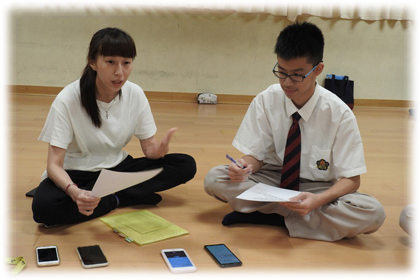 There are many types of dances. Each type requires slightly different skills. Ballet focuses on postures and positions. Modern dances come in different schools. The Mother of Modern Dance, Martha Graham, emphasizes on the control of core. In fact, modern dance is an extension of ballet, with the same focus on postures and positions. Folk dance requires the dexterity of using props. The most important thing for a dancer is to know his/her own body and the starting point for any movements. I pay more attention to postures because I started with ballet.
There are many types of dances. Each type requires slightly different skills. Ballet focuses on postures and positions. Modern dances come in different schools. The Mother of Modern Dance, Martha Graham, emphasizes on the control of core. In fact, modern dance is an extension of ballet, with the same focus on postures and positions. Folk dance requires the dexterity of using props. The most important thing for a dancer is to know his/her own body and the starting point for any movements. I pay more attention to postures because I started with ballet.
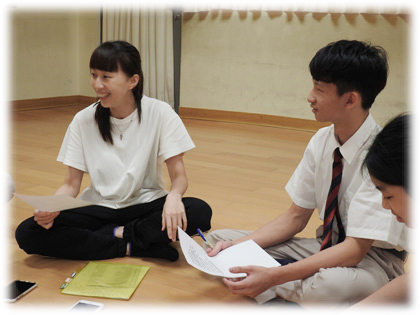 Yes, It was during the second year in senior high school. A classmate of mine mis-measured the distance and hit my nose really hard in a rehearsal. I still finished the performance that evening. Everybody's role in a dance is important, no matter where your position is. Even in an emergency room, I would hang in there until the end of the show as long as I am still awake. It was an important performance for me. I remember it was Friday, so I didn't get to see the doctor until Monday. The examination revealed that my nose was crooked. Although it has been corrected after the operation, I am still afraid when others are too close to me.
Yes, It was during the second year in senior high school. A classmate of mine mis-measured the distance and hit my nose really hard in a rehearsal. I still finished the performance that evening. Everybody's role in a dance is important, no matter where your position is. Even in an emergency room, I would hang in there until the end of the show as long as I am still awake. It was an important performance for me. I remember it was Friday, so I didn't get to see the doctor until Monday. The examination revealed that my nose was crooked. Although it has been corrected after the operation, I am still afraid when others are too close to me.
 I never wanted to become a professional dancer. When I graduated, most of the theater and dance troupes were in Northern Taiwan. I studied in Taichung and there was not much information around. I heard from an alumni that the rehearsals are time consuming, plus there are not many performing opportunities and the rehearsal fees are hardly enough to make a living. So, I never considered it. Before joining Fuhsing School, I worked part-time in different schools. My first full-time job is with Fuhsing School. This was what my parents wanted. They wanted me to settle down. They thought teaching part-time here and there was demanding and insecure. Teaching full-time at a school was the proper job for me.
I never wanted to become a professional dancer. When I graduated, most of the theater and dance troupes were in Northern Taiwan. I studied in Taichung and there was not much information around. I heard from an alumni that the rehearsals are time consuming, plus there are not many performing opportunities and the rehearsal fees are hardly enough to make a living. So, I never considered it. Before joining Fuhsing School, I worked part-time in different schools. My first full-time job is with Fuhsing School. This was what my parents wanted. They wanted me to settle down. They thought teaching part-time here and there was demanding and insecure. Teaching full-time at a school was the proper job for me.
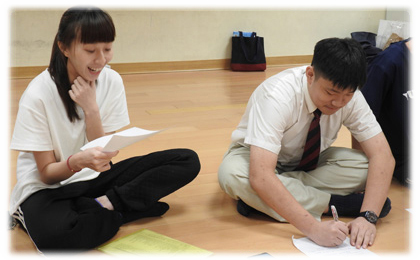 The worst thing is lack of inspirations and lack of materials. My choreography may stall if I am not able to interact with dancers or they cannot give me feedback. My favorite choreographer was Mr. Cheng Tsung-lung when I was in senior high school. Previously I was a fan of Mr. Bulareyaung. I admired his techniques, constant change of styles and variations of dances. Now I like Mr. Huang Huai-de. His dance integrates many elements so that dancers can have the leeway and variety.
The worst thing is lack of inspirations and lack of materials. My choreography may stall if I am not able to interact with dancers or they cannot give me feedback. My favorite choreographer was Mr. Cheng Tsung-lung when I was in senior high school. Previously I was a fan of Mr. Bulareyaung. I admired his techniques, constant change of styles and variations of dances. Now I like Mr. Huang Huai-de. His dance integrates many elements so that dancers can have the leeway and variety.
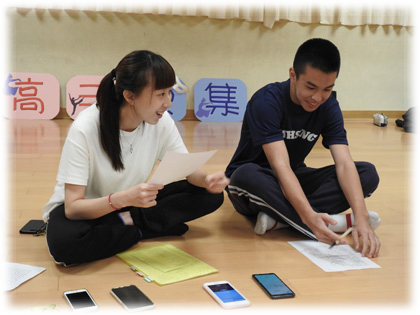 Like ballet, modern dance and folk dance learned by professional dancers are different from yoga, aerobics or fitness dance taught in gyms and sports centers. Continuity is important but difficult. There are relatively few jobs for dancers. There are not many dance theatres in Taiwan so making a living as a dancer is not easy. The society is not super supportive either. Those who set up troupes are interested in creativity and choreography. I started to teach part-time to accumulate experience with school curricula. I am a practical person and dance is a specialized field. I needed to find my own path, so I chose to become a school teacher.
Like ballet, modern dance and folk dance learned by professional dancers are different from yoga, aerobics or fitness dance taught in gyms and sports centers. Continuity is important but difficult. There are relatively few jobs for dancers. There are not many dance theatres in Taiwan so making a living as a dancer is not easy. The society is not super supportive either. Those who set up troupes are interested in creativity and choreography. I started to teach part-time to accumulate experience with school curricula. I am a practical person and dance is a specialized field. I needed to find my own path, so I chose to become a school teacher.
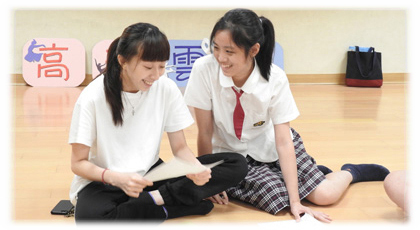 Our school clubs are usually focused on modern dance. Because modern dance is based on ballet, our choreography is geared towards ballet. Modern dance flows differently or comes with more jumps and rolls. The dance designed for younger students is mimicking of animals, sometimes topical and themed.
Our school clubs are usually focused on modern dance. Because modern dance is based on ballet, our choreography is geared towards ballet. Modern dance flows differently or comes with more jumps and rolls. The dance designed for younger students is mimicking of animals, sometimes topical and themed.
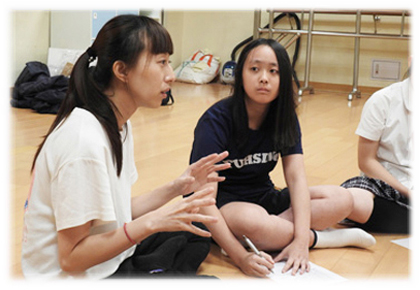 Mr. Lin Hwai-min's dance is more about history and culture. Mr. Cheng Tsung-lung's works are close to home. An old fan of Cloud Gate Dance Theatre may take a lot to accept Mr. Cheng Tsung-lung's style, but young audience will have no problem with it. According to my observation, if you can relate to Mr. Lin Hwai-min's choreography, you will soon feel for it. Mr. Cheng Tsung-lung's works are lively, friendly and close to heart.
Mr. Lin Hwai-min's dance is more about history and culture. Mr. Cheng Tsung-lung's works are close to home. An old fan of Cloud Gate Dance Theatre may take a lot to accept Mr. Cheng Tsung-lung's style, but young audience will have no problem with it. According to my observation, if you can relate to Mr. Lin Hwai-min's choreography, you will soon feel for it. Mr. Cheng Tsung-lung's works are lively, friendly and close to heart.
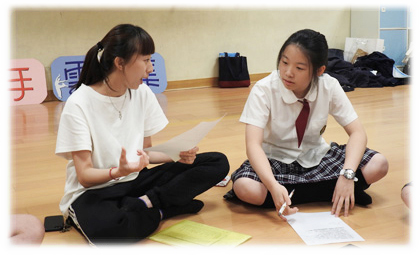 All the works from Cloud Gate Dance Theatre up to date are very much Mr. Lin Hwai-min's personal style. It is slightly different from my teaching philosophy. Dancers should command originality. I want my students at the School Dance Club to learn about persistence and breakthroughs. This was how I learned to dance. I set the bar high for myself and my students.
All the works from Cloud Gate Dance Theatre up to date are very much Mr. Lin Hwai-min's personal style. It is slightly different from my teaching philosophy. Dancers should command originality. I want my students at the School Dance Club to learn about persistence and breakthroughs. This was how I learned to dance. I set the bar high for myself and my students.
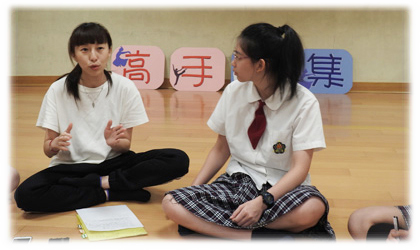 It is okay to start formal training as a teenager. However, the basics will be a bit more difficult. I think attitudes and endurability are the most important things no matter what you learn. Dance is a skill acquired by imitating, much in the same way as speaking and writing. Passions and perspirations will help you get through. You can then extend to different dances, i.e. modern dance, street dance and jazz dance, to attain greater sense of achievement.
It is okay to start formal training as a teenager. However, the basics will be a bit more difficult. I think attitudes and endurability are the most important things no matter what you learn. Dance is a skill acquired by imitating, much in the same way as speaking and writing. Passions and perspirations will help you get through. You can then extend to different dances, i.e. modern dance, street dance and jazz dance, to attain greater sense of achievement.
Image Source: Masters' Gathering
Ms. Chen Kuan-lin has extensive experience in dancing. This interview provides different perspectives on the world of professional dancers in Taiwan. Whether it is a choreographer like Mr. Lin Hwai-min or Teacher Chen who is engaged in dance education, they have the same spiritual characteristics for their work-persistence and breakthrough: persistence in education and breakthrough in choreography! Even in different positions, they are supporting the dance industry in Taiwan bit by bit. In choreography and education, Ms. Chen has integrated modern dance and ballet. In addition, through animal imitation, combined with current events, she provides various dance teaching to children of different grades, so that her students can really experience and learn dancing.
There are few job opportunities in Taiwan for professional dancers. There are not many dance troupes. The dance learned in school is different from yoga and aerobics or fitness dance taught in gyms and sports centers. Continuity is difficult. Most dance students are confronted with the job problems. Ms. Chen Kuan-lin told us that there are many different dances. Everybody resonates with different themes. Mr. Lin Hwai-min's Cloud Gate is anchored on history, talking about union and our people to the old generation. I think young audience are less familiar and interested with this. In sum, dance is about story telling. Viewers identify and connect with dancers and broaden their minds and horizons by watching performances. The popularity of dance as an art relies on all the professional dancers so that dance is closer to the people.
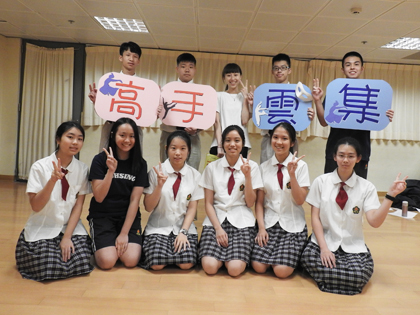
Image Source: Masters' Gathering
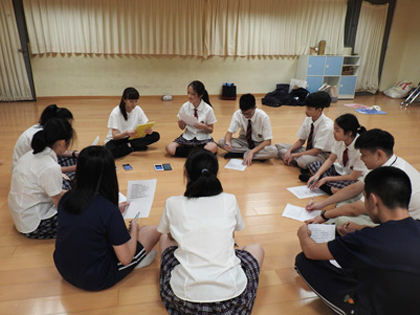
Image Source: Masters' Gathering